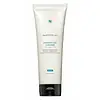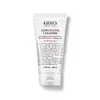What's inside
What's inside
 Key Ingredients
Key Ingredients

 Benefits
Benefits

 Concerns
Concerns

 Ingredients Side-by-side
Ingredients Side-by-side

Water
Skin ConditioningCoco-Betaine
CleansingPropylene Glycol
HumectantPEG-120 Methyl Glucose Dioleate
EmulsifyingSorbitol
HumectantGlycerin
HumectantGlycolic Acid
BufferingTriethanolamine
BufferingSodium Laureth Sulfate
CleansingSodium Chloride
MaskingDisteareth-100 Ipdi
Phenoxyethanol
PreservativeSalicylic Acid
MaskingCapryloyl Salicylic Acid
ExfoliatingMenthol
MaskingMethylparaben
PreservativeDisodium EDTA
Steareth-100
Gel FormingCeramide AP
Skin ConditioningWater, Coco-Betaine, Propylene Glycol, PEG-120 Methyl Glucose Dioleate, Sorbitol, Glycerin, Glycolic Acid, Triethanolamine, Sodium Laureth Sulfate, Sodium Chloride, Disteareth-100 Ipdi, Phenoxyethanol, Salicylic Acid, Capryloyl Salicylic Acid, Menthol, Methylparaben, Disodium EDTA, Steareth-100, Ceramide AP
Water
Skin ConditioningSodium Laureth Sulfate
CleansingDecyl Glucoside
CleansingGlycerin
HumectantCocamidopropyl Betaine
CleansingDisodium Cocoamphodiacetate
CleansingAcrylates Copolymer
Lauryl Glucoside
CleansingPEG-200 Hydrogenated Glyceryl Palmate
CleansingTriethanolamine
BufferingSodium Chloride
MaskingPentylene Glycol
Skin ConditioningPhenoxyethanol
PreservativePEG-7 Glyceryl Cocoate
EmulsifyingSodium Hydroxide
BufferingCitric Acid
BufferingHexylene Glycol
EmulsifyingBehenyl Alcohol
EmollientDistearyl Ether
Skin ConditioningSodium Benzoate
MaskingLaureth-2
CleansingSqualane
EmollientPrunus Amygdalus Dulcis Oil
Skin ConditioningPrunus Armeniaca Kernel Oil
MaskingTocopherol
AntioxidantAscorbyl Glucoside
AntioxidantPersea Gratissima Oil
Skin ConditioningWater, Sodium Laureth Sulfate, Decyl Glucoside, Glycerin, Cocamidopropyl Betaine, Disodium Cocoamphodiacetate, Acrylates Copolymer, Lauryl Glucoside, PEG-200 Hydrogenated Glyceryl Palmate, Triethanolamine, Sodium Chloride, Pentylene Glycol, Phenoxyethanol, PEG-7 Glyceryl Cocoate, Sodium Hydroxide, Citric Acid, Hexylene Glycol, Behenyl Alcohol, Distearyl Ether, Sodium Benzoate, Laureth-2, Squalane, Prunus Amygdalus Dulcis Oil, Prunus Armeniaca Kernel Oil, Tocopherol, Ascorbyl Glucoside, Persea Gratissima Oil
 Reviews
Reviews

Ingredients Explained
These ingredients are found in both products.
Ingredients higher up in an ingredient list are typically present in a larger amount.
Glycerin is already naturally found in your skin. It helps moisturize and protect your skin.
A study from 2016 found glycerin to be more effective as a humectant than AHAs and hyaluronic acid.
As a humectant, it helps the skin stay hydrated by pulling moisture to your skin. The low molecular weight of glycerin allows it to pull moisture into the deeper layers of your skin.
Hydrated skin improves your skin barrier; Your skin barrier helps protect against irritants and bacteria.
Glycerin has also been found to have antimicrobial and antiviral properties. Due to these properties, glycerin is often used in wound and burn treatments.
In cosmetics, glycerin is usually derived from plants such as soybean or palm. However, it can also be sourced from animals, such as tallow or animal fat.
This ingredient is organic, colorless, odorless, and non-toxic.
Glycerin is the name for this ingredient in American English. British English uses Glycerol/Glycerine.
Learn more about GlycerinPhenoxyethanol is a preservative that has germicide, antimicrobial, and aromatic properties. Studies show that phenoxyethanol can prevent microbial growth. By itself, it has a scent that is similar to that of a rose.
It's often used in formulations along with Caprylyl Glycol to preserve the shelf life of products.
Chances are, you eat sodium chloride every day. Sodium Chloride is also known as table salt.
This ingredient has many purposes in skincare: thickener, emulsifier, and exfoliator.
You'll most likely find this ingredient in cleansers where it is used to create a gel-like texture. As an emulsifier, it also prevents ingredients from separating.
There is much debate on whether this ingredient is comedogenic. The short answer - comedogenic ratings don't tell the whole story. Learn more about comegodenic ratings here.
The concensus about this ingredient causing acne seems to be divided. Research is needed to understand if this ingredient does cause acne.
Scrubs may use salt as the primary exfoliating ingredient.
Learn more about Sodium ChlorideSodium Laureth Sulfate (SLES) is a foaming, cleansing, and emulsifying ingredient. It is created from palm kernel oil or coconut oil. SLES is not the same as sodium lauryl sulfate. It is much milder and less likely to irritate.
SLES helps create foam in personal products. It also prevents ingredients from separating, helping to elongate the shelf life.
Sodium Laureth Sulfate is a type of sulfate. It can be drying. We recommend speaking with a professional about using this ingredient if you have concerns.
Learn more about Sodium Laureth SulfateTriethanolamine is an emulsifier and pH adjuster. It is created using ethylene oxide and ammonia. This gives Triethanolamine a nitrogen core and a similar scent to ammonia.
As an emulsifier, it prevents ingredients from separating and enhances texture by adding volume to a product.
PH adjusters are common in cosmetic products. The pH of a product can affect the effectiveness of other ingredients. A product with a high pH may also irritate the skin.
Learn more about TriethanolamineWater. It's the most common cosmetic ingredient of all. You'll usually see it at the top of ingredient lists, meaning that it makes up the largest part of the product.
So why is it so popular? Water most often acts as a solvent - this means that it helps dissolve other ingredients into the formulation.
You'll also recognize water as that liquid we all need to stay alive. If you see this, drink a glass of water. Stay hydrated!
Learn more about Water